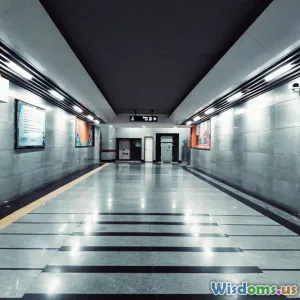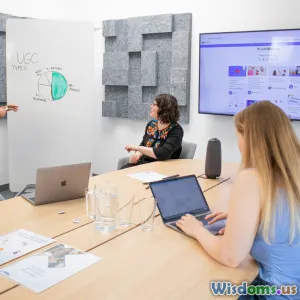
Comparing European and Asian Approaches to Transit Oriented Design
8 min read Explore how European and Asian Transit Oriented Design approaches shape urban living through contrasting strategies and exemplary projects. (0 Reviews)
Comparing European and Asian Approaches to Transit Oriented Design
Transit Oriented Design (TOD) represents a visionary urban planning approach that places mass transit hubs at the forefront of metropolitan development. Around the world, TOD promises a more sustainable, efficient, and livable city. But all TODs are not created equal. European and Asian cities, influenced by divergent histories, densities, economies, and cultures, exemplify contrasting methodologies and outcomes in TOD. This article explores these differences, illuminating how each region interprets and implements the principles of integrating transportation infrastructure with vibrant urban environments.
Introduction: The Promise and Perplexity of TOD
The global urban population keeps growing, turning questions of urban sprawl, congestion, pollution, and accessibility into existential challenges. The TOD concept tackles these challenges directly by concentrating high-density housing, commercial spaces, and amenities tightly around transit nodes to reduce reliance on cars, increase public transport use, and cultivate walkable, human-scale communities.
Europe and Asia stand as front-runners in embracing TOD, though through strikingly different urban fabrics and policy frameworks. This difference comes into focus when one considers the historical fabric of cities like Paris or Amsterdam against the rapid urbanization and towering skylines pioneered by cities such as Tokyo, Singapore, and Seoul.
Historical Context and Urban Development
European Context: Organic Growth Then Modern Adaptation
European cities were largely built before the automobile era, characterized by dense urban forms, mixed-use neighborhoods, and narrow streets ideal for pedestrians. This legacy means TOD often involves retrofitting and enhancing existing urban cores intertwined with public transit systems developed through the 19th and 20th centuries.
For example, Paris’ Réseau Express Régional (RER) combines suburban commuter rail with city metro lines creating seamless transit-oriented corridors enriched by traditional street-level commerce and housing. Europe's approach tends to prioritize preserving cultural and architectural heritage within TOD, blending modern infrastructure with historic urbanism.
Asian Context: Fast-Paced Modernization and Vertical Expansion
Asian cities, conversely, confront intense urban population surges and limited land through highly planned, large-scale TOD projects. Cities like Singapore’s Marina Bay and Hong Kong’s MTR-centric developments showcase master planning that integrates high-rise residential towers and commercial complexes directly above or adjacent to transit stations—maximizing vertical space.
Unlike Europe's incremental TOD growth, many Asian models have leapfrogged traditional urban development phases, emphasizing rapid transit deployment and aggressive zoning policies to cultivate entire new urban centers designed around transit hubs.
Planning Philosophies and Urban Design Principles
European Approach: Human-Scale, Integration, and Sustainability
European TODs prioritize pedestrian accessibility, minimizing car usage, and reinforcing the street as a public realm. Planners emphasize mixed uses that organically blend housing, shops, offices, and green spaces within walkable distances of transit.
Example: Copenhagen’s Finger Plan, developed in the mid-20th century, segments urban growth along transit corridors or “fingers”, integrating green wedges between them – maintaining proximity to nature alongside transit options. This GIS-informed planning offers a balance of density, sustainability, and quality of life.
Asian Approach: Density, Efficiency, and Technological Integration
Asian cities push the envelope on density and multi-functionality, creating vertical layered TODs combining retail malls, offices, apartments, and cultural venues integrated with cutting-edge transit tech. Emphasis is often on maximizing real estate value and transit efficiency.
Example: Tokyo’s Shinjuku Station, arguably the world’s busiest transport hub, integrates a sprawling, multi-level commercial ecosystem directly connected to high-frequency trains and subways. The design champions efficient passenger flows, seamless transfers, and digitally-enabled wayfinding.
Case Studies
Europe: Stockholm’s TOD Projects
Stockholm’s TOD initiatives, such as the Hammarby Sjöstad, demonstrate sustainable redevelopment turning former industrial watersides into vibrant, transit-connected neighborhoods. The focus is on low carbon emissions, renewable energy use, and prioritizing bicycle and pedestrian networks alongside rail connectivity.
Asia: Singapore’s Integrated Land Use and Transit Model
Singapore’s governmental Urban Redevelopment Authority orchestrates integrated land use and transit policy harmoniously, ensuring new MRT lines prompt proportionate development in housing and commercial facilities. The city-state’s commitment to green features, smart city tech, and public space excellence reinforces its leadership in TOD innovation.
Challenges and Opportunities
European Challenges
- Balancing heritage conservation with modern TOD expansion
- High costs and lengthy timelines for retrofitting historic infrastructure
- Social equity in gentrifying transit corridors
Asian Challenges
- Managing overcrowding and infrastructure strain in mega-TOD centers
- Ensuring affordable housing in high-value transit zones
- Environmental impacts of rapid vertical expansion
Both regions share the opportunity to exchange insights: Europe can draw on Asia’s tech-driven transit efficiency, while Asia can benefit from Europe’s emphasis on livability and heritage mindfulness.
Conclusion: Toward a Globally Informed TOD Future
European and Asian TOD approaches storyboard contrasting yet complementary paths toward sustainable urban futures. Europe's blend of thoughtful preservation, walkable design, and gradual growth contrasts with Asia's dynamic, vertical scaling and technological integration. As urban populations worldwide grow, cities can foster resilient, inclusive development by adopting hybrid strategies that respect cultural contexts while pushing technical and social innovation.
Ultimately, TOD is not a one-size-fits-all solution but a flexible framework. By learning from both European and Asian experiences, urban planners and policymakers can craft transit-oriented communities that meet the evolving aspirations and challenges of 21st century urban life.
References and further reading:
- Calthorpe, P. (1993). The Next American Metropolis: Ecology, Community, and the American Dream.
- Suzuki, H., Cervero, R., & Iuchi, K. (2013). Transforming Cities with Transit.
- Gehl, J. (2010). Cities for People.
- City of Stockholm. (2022). Hammarby Sjöstad Sustainability Report.
- Land Transport Authority, Singapore (LTA). Urban Redevelopment Authority, Singapore.
Rate the Post
User Reviews
Popular Posts





















